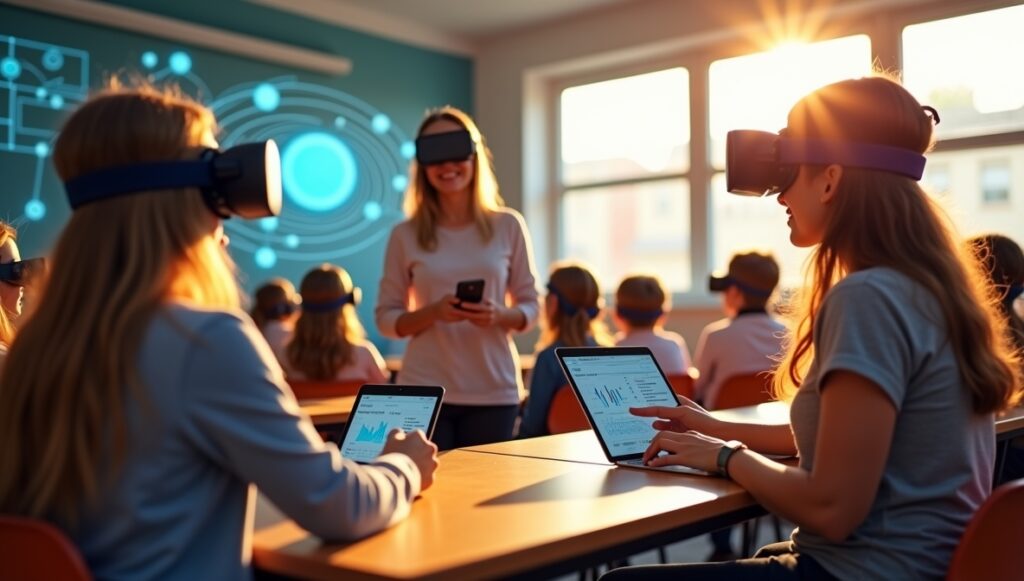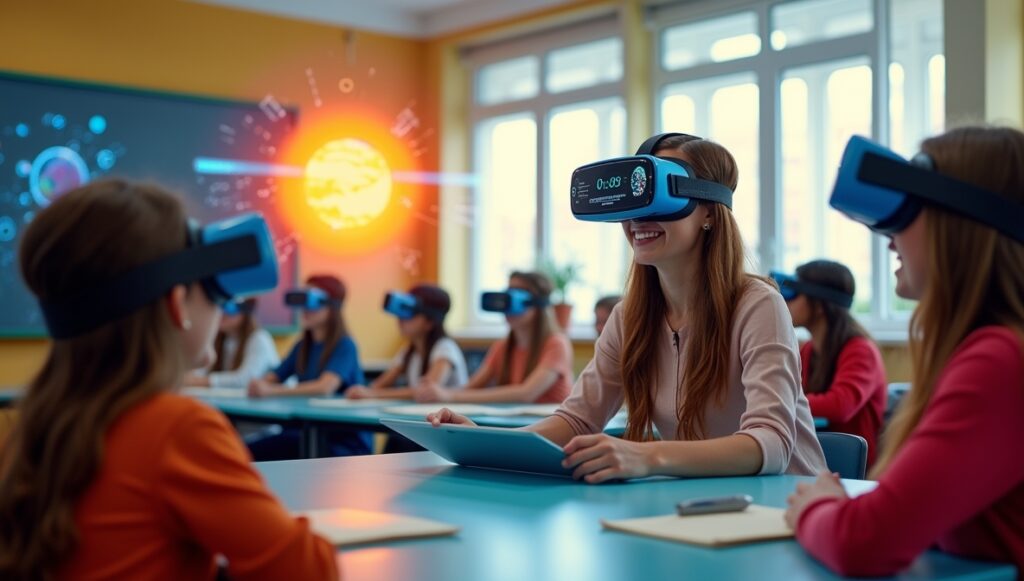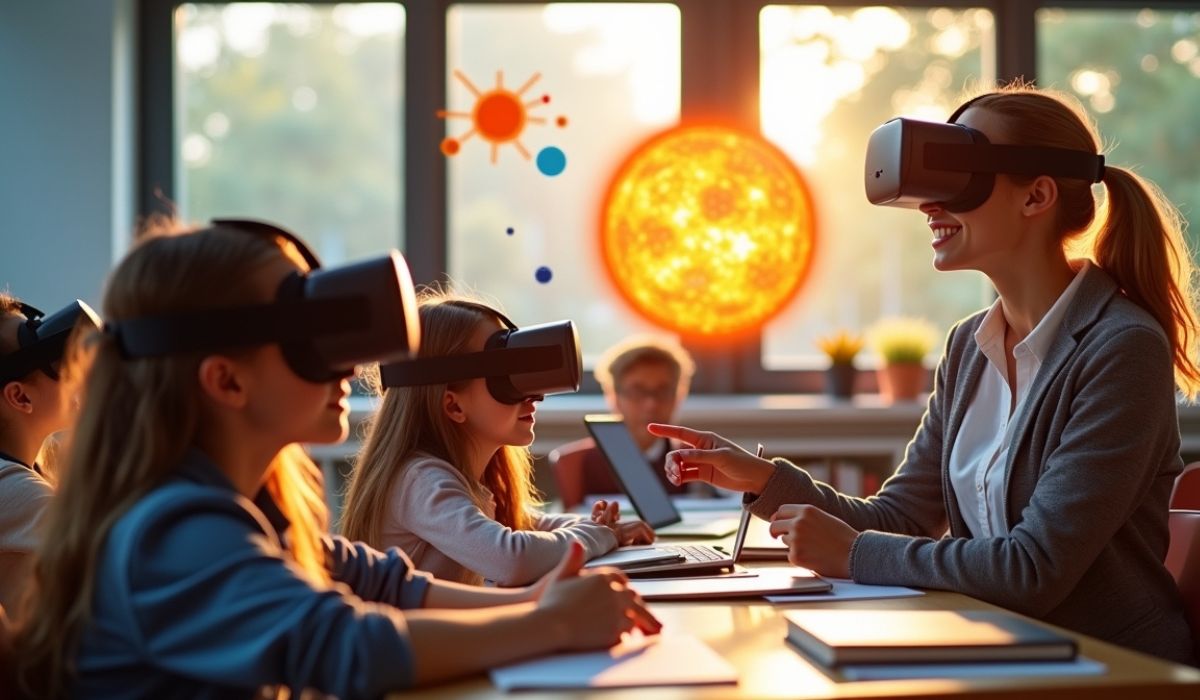Imagine a Classroom That Adapts to You—Not the Other Way Around
Picture this: A high school student in rural Kansas dissects a virtual frog in 3D, while an AI tutor adjusts math problems in real-time based on her progress. Meanwhile, a teacher in Tokyo uses IoT sensors to detect when students lose focus—and shifts the lesson instantly. This isn’t a sci-fi movie. It’s Classroom 6X, the next evolution in education.
But what makes Classroom 6X different from the smartboards and tablets of the past? Let’s explore how this fusion of AI, VR, and data is creating learning experiences as unique as fingerprints—and why schools from Oslo to Mumbai are racing to adapt.
What Makes Classroom 6X Different? (Hint: It’s Not Just Fancy Gadgets)
Traditional classrooms often follow a “one-size-fits-all” model. Classroom 6X flips this script by focusing on three pillars:
- Hyper-Personalized Learning
AI algorithms analyze how students learn—visual, auditory, kinesthetic—and adapt content delivery. Think of it like Netflix recommendations, but for algebra. - Boundless Classrooms
VR field trips to the Great Barrier Reef or the Louvre eliminate geographic and budget barriers. - Real-Time Feedback Loops
IoT wearables track engagement (e.g., eye movement, posture) to help teachers pivot lessons on the fly.

The Tech Behind Classroom 6X: A Cheat Sheet
| Technology | Role in Classroom 6X | Real-World Impact |
|---|---|---|
| AI Tutors | Customizes lesson difficulty, predicts learning gaps | Reduces dropout rates by 22% (Stanford Pilot, 2023) |
| VR Headsets | Immersive simulations for science, history, art | Boosts retention by 40% compared to textbooks |
| IoT Sensors | Monitors room temperature, noise, student focus | Teachers report 35% fewer disruptions |
| Blockchain | Securely stores academic records, certifications | Streamlines university applications |
Read Also: The Ultimate Guide to Transforming Classroom 15x into a Modern Learning Haven
Real-World Wins: Where Classroom 6X Is Shining
Case Study 1: Greenwood School District, Oregon
After implementing Classroom 6X tools in 2022:
- STEM enrollment rose 30% (especially among girls).
- Standardized test scores increased by 18% district-wide.
Case Study 2: Lagos Smart Schools Initiative
VR labs allowed students with limited resources to “tour” Harvard’s campus and collaborate with peers in Brazil—doubling college application rates.
“But Wait…” Addressing the Elephant in the (Smart) Room
Myth 1: “AI Will Replace Teachers”
Classroom 6X isn’t about replacing educators—it’s about amplifying their superpowers. Example: An AI grades essays overnight, freeing teachers to host small-group debates the next day.
Myth 2: “This Is Only for Rich Schools”
Open-source AI platforms like EduBot and low-cost VR kits (under $50/month per student) are making Classroom 6X scalable. Grants from tech giants are bridging gaps further.
How to Bring Classroom 6X to Your School: 3 Steps
- Audit Your Tech Ecosystem
- Do you have reliable Wi-Fi?
- Can existing tablets/computers support VR or AI apps?
- Start Small, Think Big
Pilot a single Classroom 6X module (e.g., AI math tutoring) in one grade before scaling. - Train the Trainers
Host workshops where teachers experiment with VR lesson planning or AI analytics dashboards.

FAQs
Q: Is Classroom 6X safe for student data privacy?
A: Reputable platforms comply with FERPA and GDPR. Always opt for encrypted, blockchain-based systems.
Q: Can preschoolers use Classroom 6X tools?
A: Yes! Simplified AI story generators and interactive VR animal “safaris” work wonders for young kids.
Q: What’s the biggest mistake schools make during implementation?
A: Skipping teacher training. Tech is useless if educators feel overwhelmed.
Q: How do I convince skeptical parents?
A: Host demo nights where kids showcase VR history projects or AI-generated science fair ideas.
Q: Does Classroom 6X require students to wear wearables all day?
A: No. Most schools use periodic check-ins (e.g., 15-minute focus scans) to avoid fatigue.
The Future Is Adaptive (And It’s Already Here)
Classroom 6X isn’t about flashy gadgets—it’s about finally meeting students where they are. Whether it’s a dyslexic child thriving with AI-generated audiobooks or a quiet teen leading a VR team project, this model makes room for every learner.
Your Move: Pick one element of Classroom 6X to explore this month. Could be a free AI lesson planner or a VR geography app. Test it. Tweak it. Then watch curiosity ignite.
You May Also Like: Science Lessons Lol: Turning Science Into Fun and Fascination

